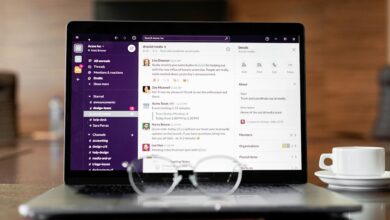Workplace Stress Management: Tips to Prevent Burnout

Table of Contents
Introduction
Did you know that 76% of U.S. workers reported experiencing burnout in 2023, with 28% saying they feel burned out “very often” or “always” at work? In today’s high-pressure work environment, knowing how to avoid burnout at work isn’t just helpful—it’s essential for your career longevity and personal wellbeing. The boundary between professional and personal life continues to blur, especially with remote work becoming more prevalent, making stress management more challenging than ever before.
In this guide, we’ll explore practical, evidence-backed strategies to help you recognize burnout symptoms early, implement effective stress management techniques, and create sustainable work habits that protect your mental health. Whether you’re experiencing early warning signs or looking to prevent burnout proactively, these insights will help you maintain balance and productivity.
Why It Matters

Workplace burnout costs U.S. employers an estimated $125 to $190 billion in healthcare spending annually, according to the Harvard Business Review. But the true cost extends far beyond financial metrics—it affects quality of life, relationships, and long-term career prospects.
Consider Sarah, a marketing director who ignored her increasing exhaustion, irritability, and decreasing job satisfaction. Within six months, her performance declined dramatically, her health suffered, and she eventually took a three-month medical leave. Her experience mirrors countless professionals who don’t recognize burnout symptoms until they’re in crisis.
Preventing burnout isn’t just about feeling better—it’s about preserving your career trajectory, maintaining meaningful relationships, and protecting your most valuable asset: your health.
Key Insights
Set Firm Boundaries Between Work and Personal Life
Professionals who strictly maintain work-life boundaries are 26% less likely to experience severe burnout, according to a 2022 study in the Journal of Occupational Health Psychology. To establish healthy boundaries:
- Define specific working hours and communicate them clearly to colleagues
- Create separate physical spaces for work and relaxation, even in home offices
- Use different devices or accounts for work and personal activities when possible
- Turn off notifications after work hours
For executive-level employees, this might mean delegating after-hours emergencies to a rotating team. For entry-level workers, it could involve discussing expectations with supervisors to avoid the pressure of 24/7 availability.
Practice Strategic Workload Management
Research from the American Institute of Stress shows that 46% of work-related stress stems from workload. Rather than simply working harder or longer, try:
- Implementing the Eisenhower Matrix to categorize tasks by urgency and importance
- Time-blocking your calendar with realistic timeframes, including buffer periods
- Renegotiating deadlines when necessary—78% of managers respect employees who communicate bandwidth issues proactively
- Using the “One Touch” principle: handle emails and small tasks immediately rather than repeatedly revisiting them
Frontline workers might focus on batch processing similar tasks, while knowledge workers may benefit from “deep work” periods of 90-120 minutes without interruptions.
Nurture Your Physical Wellbeing
Burnout isn’t just mental—it manifests physically. A Mayo Clinic study found that exercise reduces burnout symptoms by up to 40%. Consider these approaches:
- Schedule movement breaks every 60-90 minutes during the workday
- Prioritize 7-8 hours of sleep consistently—sleep deprivation increases burnout risk by 23%
- Stay hydrated and maintain balanced nutrition, avoiding excessive caffeine which can exacerbate anxiety
- Practice desk-based stretches to reduce physical tension from sedentary work
Even busy executives can incorporate “walking meetings” into their schedules, while remote workers can use break reminder apps to encourage regular movement.
Build a Supportive Professional Network

Employees with strong workplace relationships report 52% less burnout, according to Gallup research. To develop these connections:
- Schedule regular check-ins with supportive colleagues
- Join professional communities relevant to your field
- Find a mentor who has successfully navigated similar challenges
- Consider peer coaching arrangements with trusted coworkers
Even introverts can benefit from small, meaningful interactions rather than large networking events.
Resources & Tools
Mindfulness and Relaxation Apps
The Headspace for Work program shows a 32% decrease in stress after 30 days of consistent use. This subscription-based app offers specialized workplace meditation programs ranging from 3-20 minutes, making it suitable for various schedules. However, at $69.99 annually, it represents a significant investment.
Time Management Platforms
Toggl Track (4.7 stars, 2M+ users) helps identify where your time actually goes—users typically discover they’re spending 20% more time on low-value tasks than estimated. The free version works well for individuals, while teams might need the premium features ($9/month).
Employee Assistance Programs (EAPs)
Companies with robust EAPs report 21% lower absenteeism related to stress. These employer-provided services typically offer confidential counseling sessions, resources, and referrals at no cost to employees. Unfortunately, they’re underutilized—only about 10% of eligible employees access these valuable benefits.
Mistakes to Avoid
Ignoring Early Warning Signs
Nearly 65% of professionals dismiss early burnout symptoms like chronic fatigue, increasing cynicism, and declining performance. These signals typically appear 2-3 months before serious burnout develops. Instead of pushing through, treat these symptoms as legitimate warnings requiring immediate attention and adjustment.
Seeking Only Short-Term Relief
While vacation time helps temporarily (reducing burnout indicators by up to 25% according to an internal Microsoft study), 40% of employees report burnout symptoms returning within just three days of returning to work. Rather than relying solely on time off, implement sustainable daily practices like regular breaks, delegation, and workload management.
Attempting to “Hustle Harder”
Paradoxically, working longer hours when feeling burnout actually reduces productivity by 27% according to Stanford research. When experiencing burnout symptoms, strategic rest and recovery generate more output than additional work hours. Focus on efficiency and priorities rather than time spent working.
Real Examples

The Team Lead Transformation
Miguel, a software development team lead, found himself working 65+ hour weeks, constantly fielding after-hours questions from his team. His productivity declined 30% over three months, and he began experiencing insomnia and Sunday night anxiety.
By implementing structured communication protocols (designated urgent channels versus standard questions), delegating effectively, and establishing strict notification settings, he reduced his workweek to 45 hours. Within two months, his team’s output increased by 22%, and his personal stress indicators decreased significantly according to his wellness app metrics.
Tailored Tips
For New Professionals
- Build routine “learning blocks” into your schedule rather than attempting to master everything at once
- Find an experienced colleague who models healthy boundaries
- Document accomplishments weekly to maintain perspective during challenging periods
For Managers and Leaders
- Practice “calendar empathy” by avoiding scheduling meetings during lunch hours or after 4 PM
- Model healthy behavior by visibly prioritizing your own wellbeing
- Implement “no meeting” days to allow team members focused work time
For Remote/Hybrid Workers
- Create transition rituals between work and personal time (like a brief walk or change of clothes)
- Use visual cues in your home environment to signal “work mode” versus “personal mode”
- Schedule virtual coffee breaks with colleagues to combat isolation
Conclusion
Learning how to avoid burnout at work isn’t a luxury—it’s a necessity for sustainable career success and personal wellbeing. By establishing boundaries, managing workload strategically, prioritizing physical health, and building supportive networks, you can significantly reduce your burnout risk while potentially improving your performance.
The most effective approach combines immediate tactics (like taking breaks) with long-term strategies (like renegotiating responsibilities). Remember that preventing burnout requires ongoing attention rather than one-time fixes.
What workplace stressor impacts you most significantly? Share in the comments, and consider implementing just one suggestion from this article this week to begin your burnout prevention practice.
FAQs
How can I tell the difference between normal work stress and burnout?
Normal stress typically resolves after completing a challenging project or taking time off, while burnout is characterized by chronic exhaustion, cynicism about your job, and reduced professional effectiveness that persists regardless of circumstances. Physical symptoms like insomnia, frequent headaches, and digestive issues often accompany true burnout.
What should I do if I’m already experiencing burnout symptoms?
First, acknowledge the situation rather than pushing through. Schedule a conversation with your supervisor about temporary workload adjustments, utilize any available mental health benefits, and consider speaking with a healthcare provider. Immediate stress reduction techniques like meditation, physical activity, and social connection can provide relief while you develop longer-term solutions.
Can I prevent burnout in a high-pressure industry or demanding role?
Yes, even in high-intensity environments, preventative measures significantly reduce burnout risk. Focus on controlling what you can: establishing micro-boundaries around breaks, prioritizing one form of self-care daily, finding meaning in your work, and connecting with supportive colleagues. Some professionals in demanding fields schedule quarterly “burnout assessments” to catch warning signs early.
How can I approach my manager about feeling overwhelmed without seeming incompetent?
Frame the conversation around productivity and solutions rather than problems. Use specific examples: “I’ve noticed that managing both the client portfolio and the training program is reducing my effectiveness in both areas. I’ve prepared some suggestions for redistribution that would optimize our team’s output.” This approach demonstrates professionalism and problem-solving ability.
What role does sleep play in burnout prevention?
Sleep is foundational to burnout resistance. During deep sleep phases, your brain processes emotional experiences and clears stress hormones. Chronic sleep deprivation increases stress reactivity by up to 60% and impairs cognitive functions needed for workplace challenges. Prioritizing sleep quality through consistent schedules and proper sleep hygiene directly strengthens your resilience against workplace stressors.


